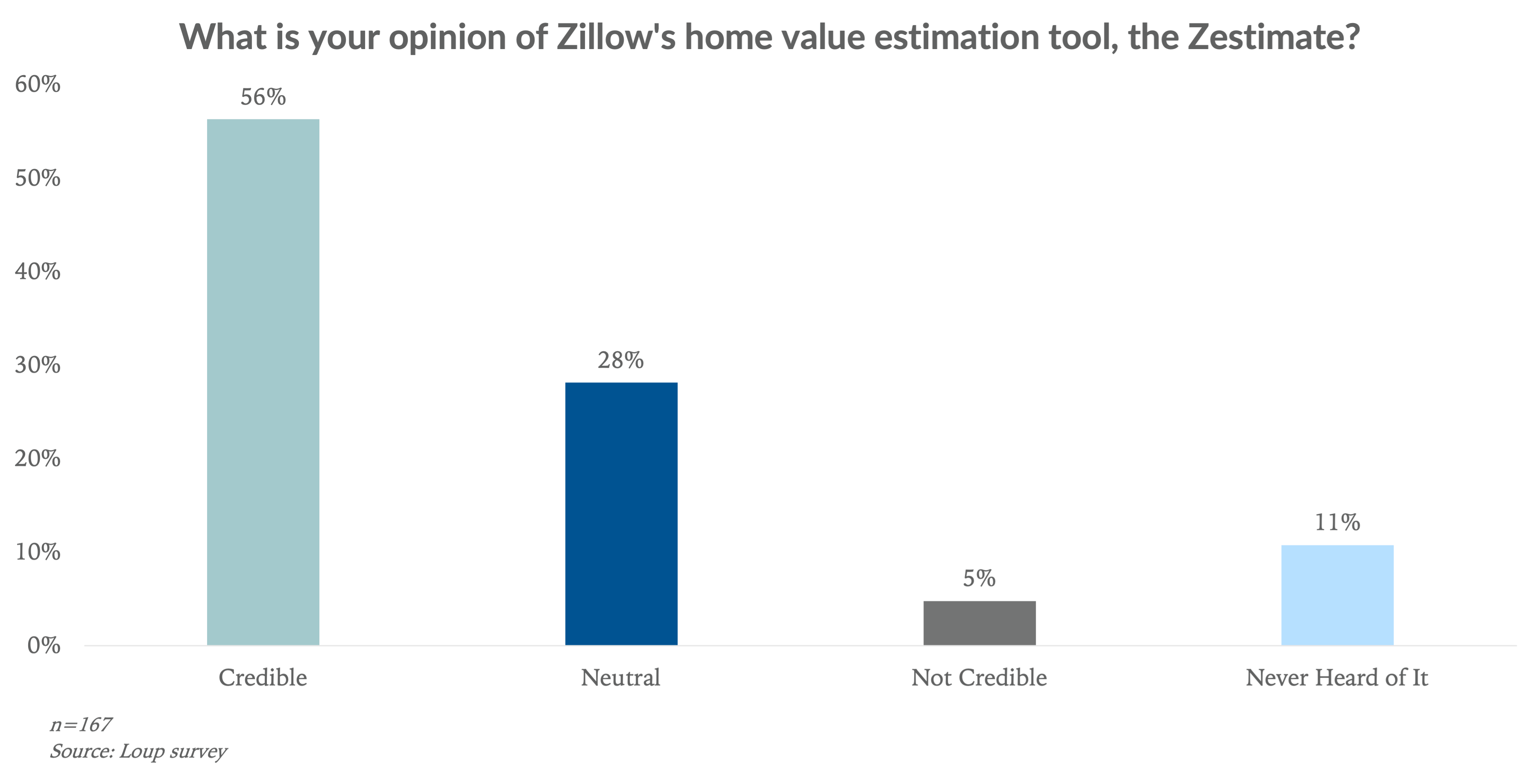Over the past two months we’ve published notes exploring the mechanics, importance, and credibility of the Zestimate. For an additional perspective, we surveyed 167 US homeowners to get their perspective.
Bottom line: 56% of respondents viewed the Zestimate as credible, 28% viewed it as neutral, 5% viewed it as not credible, and 11% had never heard of it. This view is in contrast with many real estate professionals that have a grounded, negative view of the tool’s accuracy. While the two groups have vastly different views of the Zestimate’s value, consumer awareness and trust in the Zestimate matters. Over time, we believe the product will become more accurate and gain credibility with both homeowners and real estate professionals. Given that this is our first survey of to the topic, we view it as a snapshot and more value will come in seeing how this credibility dynamic trends over time.

We view these results as consistent with our previous study, Home Sellers Mixed on the Zestimate, in which we found Zestimates were available for 57% of listed, on-market homes. We view Zestimate availability as a proxy for credibility because sellers (typically at the advice of their realtor) have the option to hide the Zestimate while still listing their property for sale on Zillow. We believe the primary reason a seller would do so is if the listing price is measurably higher than the Zestimate.
While some real estate professionals view the Zestimate skepticism and wonder at its value, the bottom line is the majority of homeowners recognize and trust it. This recognition and trust is important for two reasons:
- Winning in Search. The Zestimate helps Zillow control of the top of the real estate search and discovery funnel. Said another way, the Zillow surfing phenomenon is rooted in people’s curiosity to know the value of their dream home or their neighbor’s home. If the Zestimate loses credibility, its value to consumers decreases. Controlling the top of the search funnel is important for Zillow 2.0 (iBuying) because it provides a huge organic audience (200m plus monthly visitors) to which Zillow can advertise its iBuyer offerings at no added cost. Over time, this marketing cost advantage should translate into better margins for Zillow and better offers to home sellers, leading to more inventory and selection for home buyers.
- Winning in iBuying. Zillow has begun using the Zestimate as a live initial cash offer to home sellers, bringing price transparency, which is crucial for transacting anything online. In doing so, the Zestimate creates a direct link between Zillow’s large audience and Zillow Offers winning iBuying volume.
At first glance, there appears to be risk for Zillow in standing behind the Zestimate to accurately price and profitably exchange homes. In reality, that’s a manageable risk because there will be a human inspection before a final offer. The reason Zillow needs to get the Zestimate right is to build trust in its brand. If material changes are made to the Zestimate following the in-person inspection, consumer trust will be eroded. Conversely, if they are essentially honoring the Zestimate with a final cash offer, consumer trust will increase. And with more data over time, Zillow’s accuracy will increase.
Putting it together, while the Zestimate has room to improve, on the whole we believe it has the recognition and credibility to be a key piece in Zillow’s iBuying puzzle.
